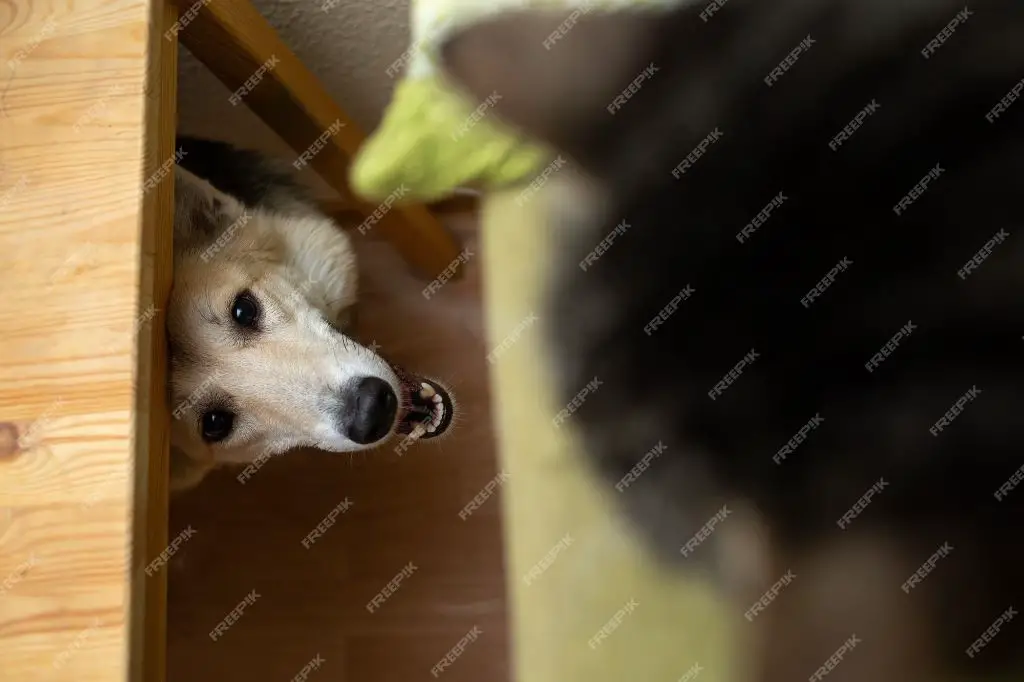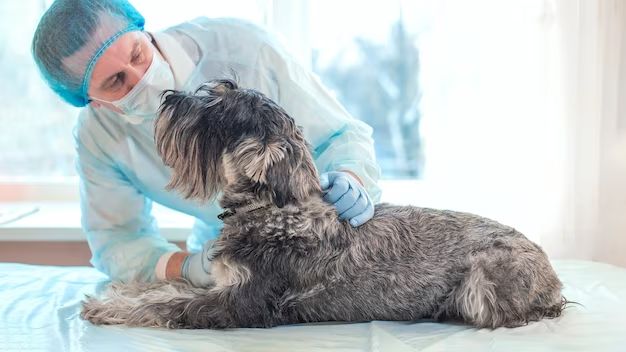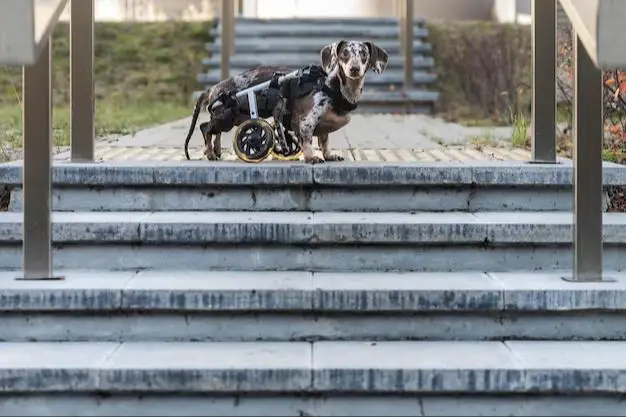Introduction
Cancer is unfortunately very common in dogs, just as it is in humans. It is estimated that 1 in 4 dogs will develop cancer at some point in their life. The most common cancers seen in dogs are lymphoma, mast cell tumors, melanoma, soft tissue sarcomas, and osteosarcoma (bone cancer).
Some dog breeds are at higher risk for certain cancers. For example, Golden Retrievers have high rates of lymphoma and osteosarcoma. Boxers and Boston Terriers are prone to mast cell tumors. Scottish Terriers have 18 times higher risk of bladder cancer than other breeds.
Knowing the warning signs of cancer can help dog owners detect it early and get prompt veterinary care. Some common signs of cancer in dogs include lumps/bumps on the skin, sudden weight loss, loss of appetite, lethargy, limping, abnormal bleeding, and chronic vomiting or diarrhea. Catching cancer early greatly improves the chances of successful treatment.
It’s important for dog owners to regularly monitor their pet’s health and behavior. Being observant and informed about potential cancer symptoms allows dog owners to get an early diagnosis and start treatment as soon as possible. This gives dogs their best chance at beating cancer and living a long, happy life.
Changes in Behavior
One of the most common signs your dog may have cancer is a change in their normal behavior. Dogs are creatures of habit and generally have predictable routines and activities they enjoy. When their behavior starts to shift dramatically without explanation, it could point to an underlying health condition like cancer.

Some of the most notable behavioral changes to look out for include increased lethargy, hiding, irritability, and loss of interest in food or toys. Lethargic dogs will often sleep much more than usual and have lower energy levels when awake. Hiding is also common, with dogs retreating to corners or under furniture more often. Dogs in pain from cancer can become more irritable, growling or snapping when approached or touched. They also tend to lose interest in things they used to enjoy, no longer getting excited for walks, treats or playtime.
While behavior changes don’t definitively mean a dog has cancer, they are an important symptom to discuss with your veterinarian. A sudden shift in personality or activity levels in an older dog warrants a full exam and potential testing. Diagnosing the underlying cause for the changes in behavior can lead to proper treatment to help your dog feel like themselves again.
Changes in Eating Habits
One of the more common signs that a dog may have cancer is a change in their eating habits. Specifically, dogs with cancer often experience a loss of appetite, weight loss, and difficulty eating or swallowing.
A healthy dog will be excited to eat at mealtimes. But a dog with cancer might show a sudden disinterest in food, even their favorite treats. Or a dog who has always been a hearty eater might start picking at their food and leaving much of it behind.

This change in appetite can lead to weight loss. As the cancer grows, it places stress on the dog’s body and alters their metabolism. The cancer also releases chemicals that suppress appetite. So cancer tends to cause unintended weight loss in dogs as they eat less but their body’s demands for energy increase.
Finally, some forms of cancer can cause obstructions or discomfort in the mouth, throat, or digestive system. This can make eating and swallowing difficult or painful. So your dog may want to eat but has trouble doing so comfortably. They may chew or swallow very slowly compared to their usual eager pace.
If your dog shows a pronounced loss of appetite, rapid weight loss, or strain eating or swallowing, be sure to contact your veterinarian. While other conditions can cause these symptoms, they may signal cancer. Getting an early diagnosis and starting treatment as soon as possible provides the best chance for recovery.
Unexplained Lumps
One of the most common signs of cancer in dogs is the appearance of new lumps or bumps on their body. These lumps can appear anywhere, but some of the most common locations include the head, neck, shoulders, chest, abdomen, and legs.
The size of lumps can range from very small to quite large. Some may start off tiny and grow over time. In terms of texture, cancerous lumps are often firm or hard. However, they can also feel soft or fluid-filled in some cases.

If you notice any new lumps or bumps on your dog, it’s very important to have them checked by a veterinarian as soon as possible. Even if the lump seems small or benign, it’s impossible to tell if it could be cancerous without a biopsy. Early detection greatly improves the chances of successful treatment.
When you bring your dog in for an exam, the vet will note the location, size, texture and appearance of the lump. They may recommend tests like a fine needle aspirate, biopsy or imaging scans to determine if the lump is cancerous. Catching it early could save your dog’s life.
Difficulty Breathing
One concerning sign of potential cancer in dogs is labored breathing or difficulty catching their breath. You may notice your dog breathing rapidly or panting when they haven’t been active. Persistent coughing can also indicate respiratory distress related to a tumor or growth compressing the airways. Your dog may cough frequently or have a hacking cough that produces mucus or fluid. Look out for discharge from the nose as well, which can be a sign of nasal tumors or metastasis to the nasal cavity.
If your dog shows signs of respiratory distress, it’s important to get them checked by a vet as soon as possible. Labored breathing is an emergency in some cases, as it indicates your dog isn’t getting enough oxygen. Treatment may include medications, oxygen therapy, and addressing any masses or fluid buildup compressing the airways. Getting an accurate diagnosis is key, as many conditions can cause breathing issues in dogs. But rapid breathing, coughing, and nasal discharge should prompt further cancer screening when paired with other potential symptoms.
Skin Changes
One of the possible signs of cancer in dogs is changes to their skin and coat. Some skin changes to look out for include:
Sores, Scabs, or Lesions
Dogs with cancer may develop sores, scabs, wounds, or lesions on their skin that do not heal. These skin abnormalities may be localized in one area or appear in multiple spots across your dog’s body. The sores may leak fluid, ooze, or bleed. Any sore or lesion that does not heal within a couple weeks warrants a veterinary visit.
Itchiness and Hair Loss
Some forms of dog cancer can cause severe itchiness, which may lead to scratching, biting, and licking of the skin. This self-trauma can result in hair loss, bald patches, and open wounds. Localized or widespread itching and hair loss can signal an underlying health issue like cancer, so bring your dog to the vet if you notice either symptom.
In addition to itching and scratching, certain cancers like lymphoma may cause more generalized hair loss and thinning of the coat. Coat changes and excessive shedding beyond the normal seasonal variations should be evaluated by your veterinarian.
While skin issues like allergies can also cause itching and hair loss, any sudden development of these symptoms in an adult dog warrants investigation to rule out the possibility of cancer.
Bleeding or Discharge
One concerning sign of potential cancer in dogs is abnormal bleeding or unusual discharge from the body. Bloody urine or stool can indicate there is internal bleeding somewhere in the urinary tract or gastrointestinal system that could be caused by cancerous tumors or growths.
Bloody urine may appear pink, red, or brown in color. Bloody stool can appear black and tarry, or contain visible red blood. Any observation of blood in a dog’s urine or stool warrants an immediate trip to the veterinarian for evaluation.
Similarly, any unusual discharge coming from the eyes, mouth, nose, or genital region could signal a problematic health condition like cancer. For example, eye discharge may point to eye cancer, nasal discharge could indicate nasal cancer, and vulvar discharge might suggest reproductive cancer.
Because abnormal bleeding and discharge can rapidly weaken a dog, it’s important not to delay having these symptoms checked. Catching the cause early significantly improves outcomes. Your veterinarian will run tests to pinpoint the origin site and determine if cancerous growths are responsible for the bleeding or discharge.
Mobility Issues
One of the most obvious signs of cancer is when your dog experiences mobility issues and has difficulty moving around. This is because tumors or cancerous growths can press on nerves, bones, and joints, leading to pain and impaired mobility.

Some of the mobility issues to look out for include:
- Lameness – Your dog may start limping or holding up a leg if bone cancer is present. The lameness may shift between legs as the cancer spreads.
- Stiffness – You may notice your dog moving slower, seeming stiff, or hesitating to lie down. This could indicate arthritis or pain from cancer.
- Difficulty standing or climbing – Your dog may struggle to get up, avoid stairs, or seem weak in their hind legs. This loss of strength can result from tumors pressing on the spine.
If your previously active dog starts slowing down and struggles with mobility, schedule a vet visit. Early cancer detection and treatment is key. Your vet can run tests to pinpoint the cause and suggest treatment options to reduce any pain and disability.
Diagnosis
If your veterinarian suspects your dog may have cancer, they will perform a complete physical exam, looking for any lumps, bumps, or other abnormalities. Blood tests and urinalysis may also be recommended to check for any abnormalities that could indicate cancer.
Imaging tests like x-rays, ultrasound, CT scan or MRI can be used to locate tumors or look for signs of cancer spread. These tests allow your veterinarian to see inside your dog’s body and identify any masses or abnormalities.
To definitively diagnose cancer, your vet will need to take a sample of the abnormal cells or tissue and examine it under a microscope. This is called a biopsy. There are a few different ways a biopsy can be obtained depending on the location and accessibility of the abnormality. Confirming cancer usually requires microscopic examination of a tissue sample.
Treatment Options for Dogs with Cancer
If your dog is diagnosed with cancer, there are several treatment options available. The main treatments for canine cancer include:
Surgery
Surgery is commonly used to remove isolated tumors if they have not spread to other areas. The goal of surgery is to completely remove all cancerous tissue from the body. Sometimes surgery is combined with chemotherapy or radiation to improve outcomes.
Chemotherapy
Chemotherapy uses anti-cancer drugs to kill cancer cells and slow their growth. It can be used before or after surgery, as well as alongside radiation. Chemotherapy is typically given in cycles with rest periods in between treatments.
Radiation
Radiation uses high-energy beams like x-rays to kill cancer cells and shrink tumors. It is a local treatment targeted at cancer sites in the body. Radiation is usually done in combination with other treatments.
Pain Medication
Pain medication can help provide relief and comfort to dogs during cancer treatment. Common medications include NSAIDs, opiates, and steroids. Maintaining quality of life is an important consideration when treating canine cancer.
The treatment plan for your dog will depend on the type and stage of cancer, as well as your dog’s overall health. Your veterinarian will discuss all of the options and recommend the best approach to fight your dog’s cancer and prioritize their comfort.